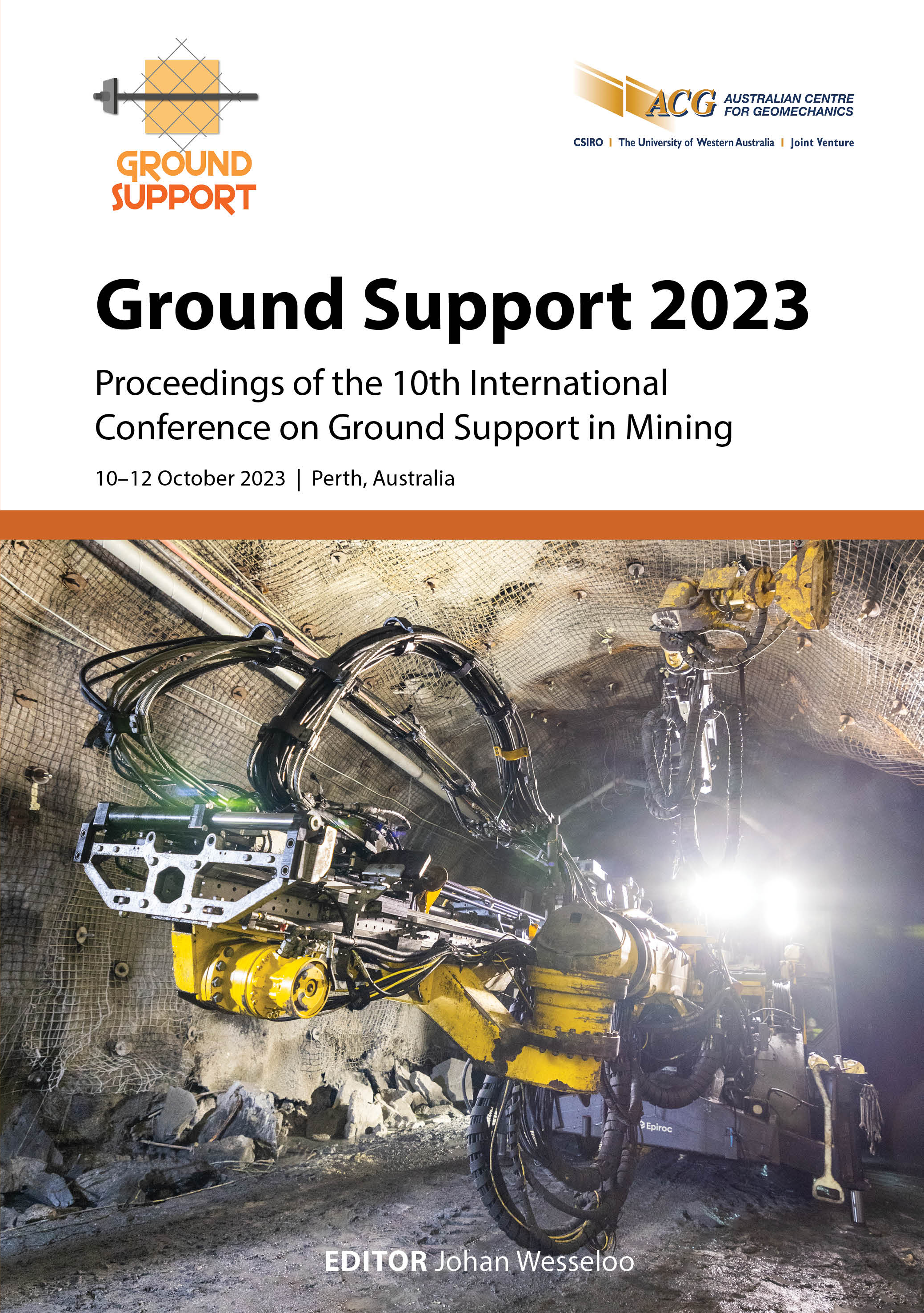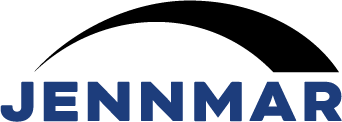Suggested framework for design effort and acceptance criteria for underground mine excavations

|
Authors: Dunn, MJ; de Graaf, PHJ |
DOI https://doi.org/10.36487/ACG_repo/2325_36
Cite As:
Dunn, MJ & de Graaf, PHJ 2023, 'Suggested framework for design effort and acceptance criteria for underground mine excavations', in J Wesseloo (ed.), Ground Support 2023: Proceedings of the 10th International Conference on Ground Support in Mining, Australian Centre for Geomechanics, Perth, pp. 535-546, https://doi.org/10.36487/ACG_repo/2325_36
Abstract:
It is generally accepted that a higher confidence and reliability is required for the design of underground mining excavations as it passes through the various study stages (conceptual, pre-feasibility, feasibility) and the implementation and operational phases. Often this is related to the amount and type of geotechnical data available to support the underground excavation design; however, many additional factors need to be considered. Many of these factors are interrelated and cannot be chosen or dealt with in isolation. This requires consideration of context, intent, consequences, uncertainty, and risk. The design effort for underground mine excavations needs to consider the following: Excavation design lifetime, use and criticality to continuing mining operations. Excavation hazard and risk (principally safety and economic, but also reputational and licence to operate). Anticipated failure mechanisms (scale, frequency, and predictability). Data availability (confidence, spatial distribution, representativeness, type, quantity, and quality). Appropriate design methods (related to risk profile and failure mechanisms). Design criteria which consider the excavation use and serviceability requirements. Only by understanding the risks associated with the excavation and its intended use, is it possible to determine the design effort and appropriate design criteria. The paper will discuss the aspects outlined above and propose a scheme that relates the design effort to the excavation risk. This approach has been useful for providing a framework, for alignment of consultants and internal stakeholders in prioritising design study and investigation area focus, and commensurate rigour in approach for recent projects.
Keywords: design, acceptance criteria, uncertainty, risk
References:
Adams, BM 2015, ‘Slope stability acceptance criteria for opencast mine design’, in G Ramsey (ed.), Australia New Zealand Conference on Geomechanics, International Society for Soil Mechanics and Geotechnical Engineering , London.
Barton, N, Lien, R & Lunde, J 1974, ‘Engineering classification of rock masses for the design of rock support’, Rock Mechanics, vol. 6, pp. 189–236.
Basson, FRP & Dunn, MJ 2009, ‘Numerical modelling guidelines for underground mines’, Newmont, Denver, internal document.
Beer, G & Meek, JJ 1982, ‘Design curves for roofs and hangingwalls in bedded rocks based on ‘voussior’ beam and plate solutions’, Transactions of the Institute of Mining and Metallurgy,vol. 91, pp. A18–A22.
Bieniawski, ZT 1976. ‘Rock mass classifications in rock engineering’, in ZT Bieniawski (ed.), Proceedings Symposium on Exploration for Rock Engineering, Balkema, Rotterdam, vol. 1, pp. 97–106.
Bieniawski, ZT 1989, Engineering Rock Mass Classifications, John Wiley & Sons, New York.
Bieniawski, ZT 1992, ‘Principles of engineering design for rock mechanics’, in JR Tillerson & WR Wawersik (eds), Proceedings of the 33rd US Symposium on Rock Mechanics, Balkema, Rotterdam, pp. 1031–1040.
Carter, TG 2000, ‘An update on the Scaled Span Concept for dimensioning surface crown pillars for new or abandoned mine workings’, Proceedings of the 4th North American Rock Mechanics Conference, American Rock Mechanics Association, Alexandria,
pp. 465–472.
Carter, TG, de Graaf, PJH, Dixon, J, Creighton, A, Macciotta, R, Silva-Tulla, F & Stacey, P 2022, ‘Transitioning from mine operations to closure: the dilemma of differing geotechnical design acceptance criteria perspectives’, in AB Fourie, M Tibbett & G Boggs (eds), Mine Closure 2022: 15th International Conference on Mine Closure, Australian Centre for Geomechanics, Perth, pp. 237–258,
Cepuritis, P & Villaescusa, E 2012, ‘A reliability-based approach to open stope span design in underground mining’, Proceedings of the 6th International Conference and Exhibition on Mass Mining (MassMin 2012), Canadian Institute of Mining, Metallurgy and Petroleum, Westmount, CD-Rom only.
de Graaf, PJH, Desjardins, M & Tsheko, P 2019, ‘Geotechnical risk management for open pit mine closure: a sub-arctic and semi-arid case study’, in AB Fourie & M Tibbett (eds), Mine Closure 2019: Proceedings of the 13th International Conference on Mine Closure, Australian Centre for Geomechanics, Perth, pp. 211–234,
Dunn, MJ 2013, ‘Uncertainty in ground support design and implementation in underground mining’, in Y Potvin & B Brady (eds), Ground Support 2013: Proceedings of the Seventh International Symposium on Ground Support in Mining and Underground Construction, Australian Centre for Geomechanics, Perth, pp. 345–358,
Dunn, MJ 2014, ‘Geotechnical models and data confidence in mining geotechnical design’, Proceedings of the Third Australasian Ground Control in Mining Conference (AusRock 2014), The Australasian Institute of Mining and Metallurgy, Melbourne pp. 105–112.
Dunn, MJ 2015, ‘How reliable are your design inputs?’, in Y Potvin (ed.), Design Methods 2015: Proceedings of the International Seminar on Design Methods in Underground Mining, Australian Centre for Geomechanics, Perth, pp. 367–381,
Dunn, MJ 2019, ‘Quantifying uncertainty in mining geomechanics design’, in J Wesseloo (ed.), MGR 2019: Proceedings of the First International Conference on Mining Geomechanical Risk, Australian Centre for Geomechanics, Perth, pp. 391–402,
Fillion, M-H & Hadjigeorgiou, J 2013, ‘Reliability of strength estimates based on limited laboratory data’, in PM Dight (ed.), Slope Stability 2013: Proceedings of the 2013 International Symposium on Slope Stability in Open Pit Mining and Civil Engineering, Australian Centre for Geomechanics, Perth, pp. 163–176,
Goodman, RE & Shi, G 1985, Block Theory and its Application In Rock Engineering, Prentice Hall, Upper Saddle River.
Hadjigeorgiou, J 2012, ‘Where do the data come from?’, in Y Potvin (ed.), Deep Mining 2012: Proceedings of the Sixth International Seminar on Deep and High Stress Mining, Australian Centre for Geomechanics, Perth, pp. 259–277,
Hadjigeorgiou, J & Harrison, JP 2011, ‘Uncertainty and sources of error in rock engineering’, in Q Qian & X Zhou (eds), Proceedings of the 12th ISRM International Congress on Rock Mechanics, Harmonising Rock Engineering and the Environment, CRC Press, Leiden, pp. 2063–2067.
Haile, A 2004, ‘A reporting framework for geotechnical classification of mining projects’, AusIMM Bulletin, The Australasian Institute of Mining and Metallurgy, Melbourne, pp. 30–37.
Haines, A, Swart, A & Kruger, A 2006, ‘Proactively mitigating geotechnical risks in open pit and underground mining’, in Proceedings of the Second International Seminar on Strategic versus Tactical Approaches in Mining, Australian Centre for Geomechanics, Perth.
Hawley, M & Cunning, J 2017, Guidelines for Mine Waste Dump and Stockpile Design, CRC Press, Boca Raton.
Hedley, DGF & Grant, F 1972, ‘Stope-and-pillar design for the Elliot Lake Uranium Mines’, Bulletin of the Canadian Institute of Mining and Metallurgy, vol. 65, no. 273, pp. 37–44.
Hoek, E 1991, ‘When is a design in rock engineering acceptable?’, Proceedings 7th International Congress on Rock Mechanics, Balkema, Rotterdam, vol. 3, pp. 1485–1497.
Hoek, E, Kaiser, PK & Bawden, WF 1995, Support of Underground Excavations in Hard Rock, Balkema, Rotterdam.
Hutchinson, DJ & Falmagne, V 2000, ‘Observational design of underground cable bolt support systems utilizing instrumentation’, Bulletin of Engineering Geology and the Environment, vol. 58, no. 3, pp. 227–241.
Lambe, TW 1985, ’Amuay landslides’, Proceedings of 11th International Conference on Soil Mechanics and Foundation Engineering, Golden Jubliee Volume, Balkema, Boston, pp. 137–158.
Laubscher, DH 1990, ‘A geomechanics classification system for the rating of rock mass in mine design’, The Southern African Institute of Mining and Metallurgy, vol. 90, no. 10, pp. 257–273.
Lunder, P & Pakalnis, RC 1997, ‘Determination of the strength of hard rock pillars’, Bulletin of the Canadian Institute of Mining, Metallurgy and Petroleum, vol. 90, no. 1013, pp. 51–55.
Macciotta, R, Creighton, A & Martin, CD 2020, ‘Design acceptance criteria for operating open pit slopes: an update’, CIM Journal, vol. 11, pp. 248–265.
Mathews, KE, Hoek, E, Wyllie, DC & Stewart, S 1981, Prediction of Stable Excavation Spans for Mining at Depths Below 1,000 Metres in Hard Rock, Golder Associates, CANMET Library & Documentation Services Division, Vancouver.
Peck, RB 1969, ‘Advantages and limitations of the observational method in applied soil mechanics’, Ninth Rankine Lecture, Geotechnique, vol. 19, no. 2, pp. 171–187.
Potvin, Y 1988, Empirical Open Stope Design in Canada, PhD thesis, University of British Columbia, Vancouver.
Read, J & Stacey, P 2009, Guidelines for Open Pit Slope Design, CSIRO Publishing, Collingwood.
Silva, FM, Lambe, TW & Marr, WE, 2008, ‘Probability and risk of slope failure’, Journal of Geotechnical and Geoenvironmental Engineering, vol. 134, no. 12, pp. 1691–1699.
Stacey, TR 2004, ‘The link between the design process in rock engineering and the code of practice to combat rockfall and rockburst accidents’, The Journal of The South African Institute of Mining and Metallurgy, vol. 104, pp. 29–34.
Stacey, TR 2008, ‘Are design codes appropriate in mining rock engineering?’, in Y Potvin, J Carter, A Dyskin & R Jeffrey (eds), SHIRMS 2008: Proceedings of the First Southern Hemisphere International Rock Mechanics Symposium, Australian Centre for Geomechanics, Perth, pp. 129–136,
Stacey, TR 2009, ‘Design—a strategic issue’, Journal of The Southern African Institute of Mining and Metallurgy, vol. 109,
pp. 157–162.
Starfield, AM & Cundall, PA 1988, ‘Towards a methodology for rock mechanics modelling’, International Journal of Rock Mechanics and Mining Sciences & Geomechancis Abstracts, vol. 25, no. 3, pp. 99–106.
Steffen, OKH 1997, ‘Planning of open pit mines on risk basis’, Journal of The Southern African Institute of Mining and Metallurgy, vol. 2, pp. 47–56.
Wiles, T 2023, Map3D, computer software, Map3D International Ltd, Toronto.
© Copyright 2025, Australian Centre for Geomechanics (ACG), The University of Western Australia. All rights reserved.
View copyright/legal information
Please direct any queries or error reports to repository-acg@uwa.edu.au
View copyright/legal information
Please direct any queries or error reports to repository-acg@uwa.edu.au
